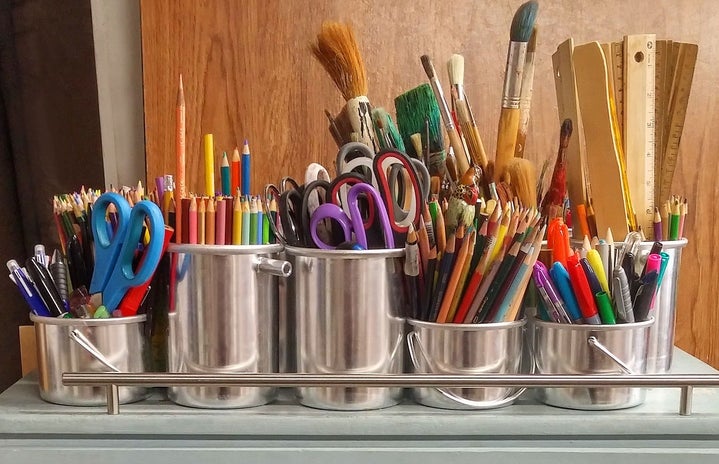How to get the best out of art galleries? Where to start when you want to enjoy the works but it all seems too complicated, too old, or simply too much?
I could spend hours and hours at an art museum, admiring paintings and sculptures. The secret to truly enjoying the visit is to convert the practice into a subjective experience. Here is a part two of my two-piece article series on how to start appreciating old visual arts through fun and easy “games”.
Please familiarize yourself with the first part, too! To cite the most important point of the first article: arts are about meeting people and going places. With that thought in our hearts, we continue:
5. The one who came before their time
This one may require some knowledge on art history, but it is possible to play based on comparison and common sense. Some artists followed the trends of the time – some were already ahead of it.
Consider the following: You look at a line of medieval paintings with similar religious scenes and people mostly positioned so that their right or left side pointing the viewer and their gazes slightly turned away from you, staring at whatever is in the middle of the picture. Suddenly there is a painting where a bleak Jesus looks right into your face, crying. The work constructs a direct contact with the viewer, the background hazy and reminding of 20th century surrealism. You may have found the one who came before their time.
Bramantino: The Risen Christ. Circa 1490. Currently in Thyssen-Bornemisza Museum, in Madrid, Spain.
6. Find a doppelganger
This is something that has been going around the Internet. (Link leads to Sun.co.uk website.) If you are lucky enough, there is a chance that a figure in a historical portrait looks just like you. If photos are allowed, ask a friend to take a picture of you standing next to your look-a-like, making a similar face. Upload to social media.
Anthony van Dyck: Self-Portrait. 1st third of the 17th century. Currently in Alte Pinakothek, Munich, Germany. The artist bears a great resemblance to a certain Finnish president. Anyone? No? Okay.
7. Learn about historical/ mythological figures
These games are something that help you get started. Next step is to familiarize yourself with the people you met. Who is the beauty in the postcard? What actually happened to that saint? Why do they portray him/her that way? This step is actually optional, since you can have your fun using only your imagination. But sometimes (and for some people) the truth is this: the more you know, the merrier it gets. This is especially true with pre-20th century Western visual arts.
Paul Delaroche: The Execution of Lady Jane Grey. 1834. Pertaining to the collection of London National Gallery, but currently on loan to a Japanese gallery (Wikipedia 22.11.2017). Not only is the subject of this work among the most fascinating occasions of British royal history, the work itself has drawn a lot of attention during its lifetime. The artist received a lot of criticism for relying too much on history and being mainly of interest to those who really “do not love painting”. Read more about it for instance here. (Link leads to newstatesman.com website.)
In the modernist times combining history and art was sometimes thought to be “bourgeois” and un-artistic. Yet up to these days historical paintings remain highly popular and have been even gaining popularity in post-modern times. And who said history is not an art? It has its own muse, too! So do not be afraid of using art as a tool to learning, as long as you check your sources.
8. Bonus tip: Postcards!
Almost every proper art gallery stacks some postcards. These are relatively cheap and neat souvenirs that you can also hang on your bedroom door to bring inspiration or frame them and simply recast them as fancy little decorative elements for your dwelling.
When you take the work home with you it becomes yours in a figurative sense. When you take a look at the postcard, you are not only reminded of your visit – you are also reuniting with the person or revisiting the place or the scenery and re-experiencing the sensibilities the work evoked in you upon seeing it the first time.
Caspar David Friedrich: Winter landscape with a Church. 1811. Currently in Museum für Kunst und Kulturgeschichte, in Dortmund, Germany. A great example of a work you have to stop to look at not to miss the most important facets. This romantic painting could also make a beautiful Christmas card.
Michele Pace del Campidoglio: Still Life with Grapes, Figs and Marrow. First half of the 17th century. Currently in Museu Nacional d’Art de Catalunya, in Barcelona. A fair warning: grab something before visiting that still life room. Unless dead birds make you lose all your appetite, of course.
When your visit is over, you have already met many people, perhaps visited a couple of new places and cultured yourself a bit. Whether it is awe targeted towards the artist or pity to the subjects portrayed, the most important thing is that you felt something and got engaged in the process of wanting to see and learn more. On the next visit you already know some more – and perhaps also enjoy some more.
Photos:
The fascinating painting used as a thumbnail is Las Hilanderas (the Spinners) by Diego Velázquez, painted circa 1655‒1660 and currently in Prado Museum, in Madrid. The painting is a reference to a Greek mythologyical story about a mortal woman who challenged goddess Athena to a weaving competition and won.
All the pictures used are from Wikimedia Commons and in the public domain in their country of origin and areas where the copyright term is author’s life plus 100 years or less.



